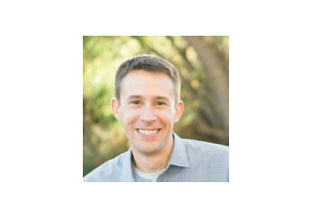Algae are an exciting renewable feedstock for the future of fuels and products. One particularly interesting application, which the U.S. Department of Energy (DOE) Bioenergy Technologies Office (BETO) is exploring, shows the potential to turn
March 29, 2022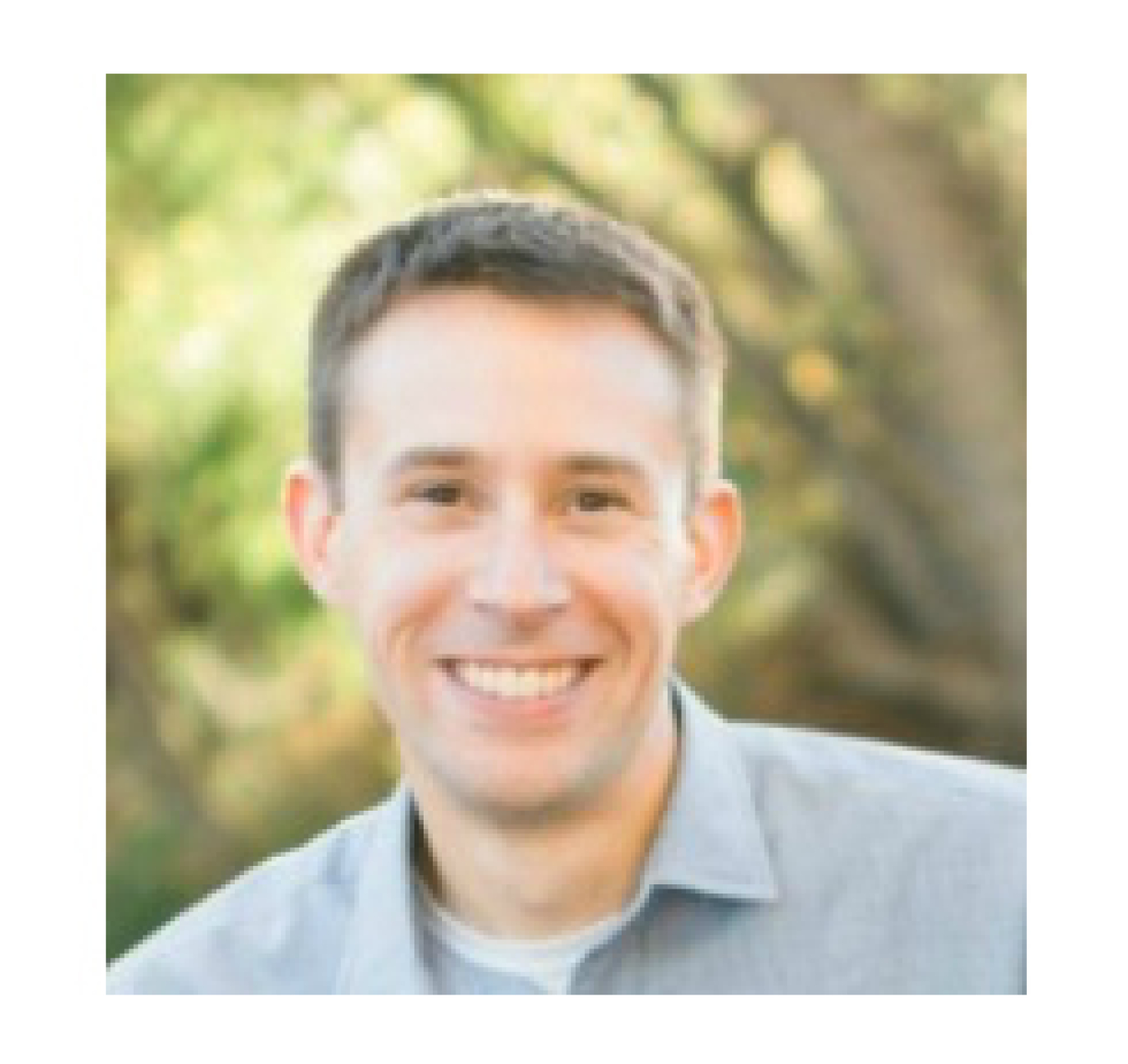
Author: Daniel B. Fishman, Technology Manager, Advanced Algal Systems
Read Daniel's bio ►
Meet the other bloggers ►
Return to Bioprose blog ►
National laboratories discover the telltale signs of algae distress to target effective treatments and mitigate crop collapse.
Algae are an exciting renewable feedstock for the future of biofuels and bioproducts. One particularly interesting application, which the U.S. Department of Energy (DOE) Bioenergy Technologies Office (BETO) is exploring, shows the potential to turn algae into jet fuel precursors. Their fast growth rates, dense cultures, and genetic diversity means they possess an incredible number of unique properties that can be manipulated in a myriad of ways.
Yet lurking in or around every algae pond are pests—grazers and predators that have the potential to devastate the algae crop. Algae ponds have the potential to “crash” or be overtaken quickly because of these pests, turning from a healthy, vibrant green to sickly brown and dead in a matter of hours to days. This rapid deterioration poses significant challenges for the scale-up of algae production for the future.
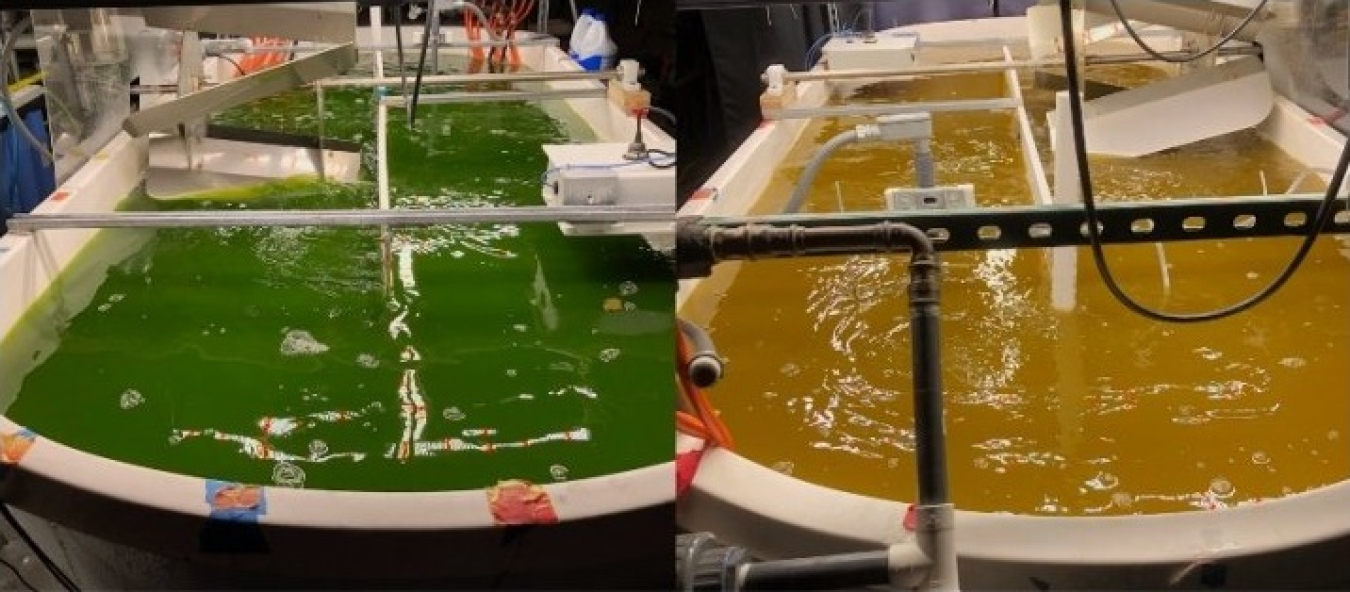
During a pond crash, algae rapidly turns from green and healthy to brown and sickly. Pictured here are example ponds (healthy and sickly) from the Algae Raceway Testbed at Sandia National Laboratories. Photo courtesy of Sandia National Laboratories
However, what if there was technology to monitor and predict these pond crashes before they happen, giving pond operators time to deploy the right countermeasures? Researchers at the Sandia and Lawrence Livermore National Laboratories (SNL and LLNL) are doing just that.
Researchers Listen for Algae SOS Signals to Prevent Algae Collapse
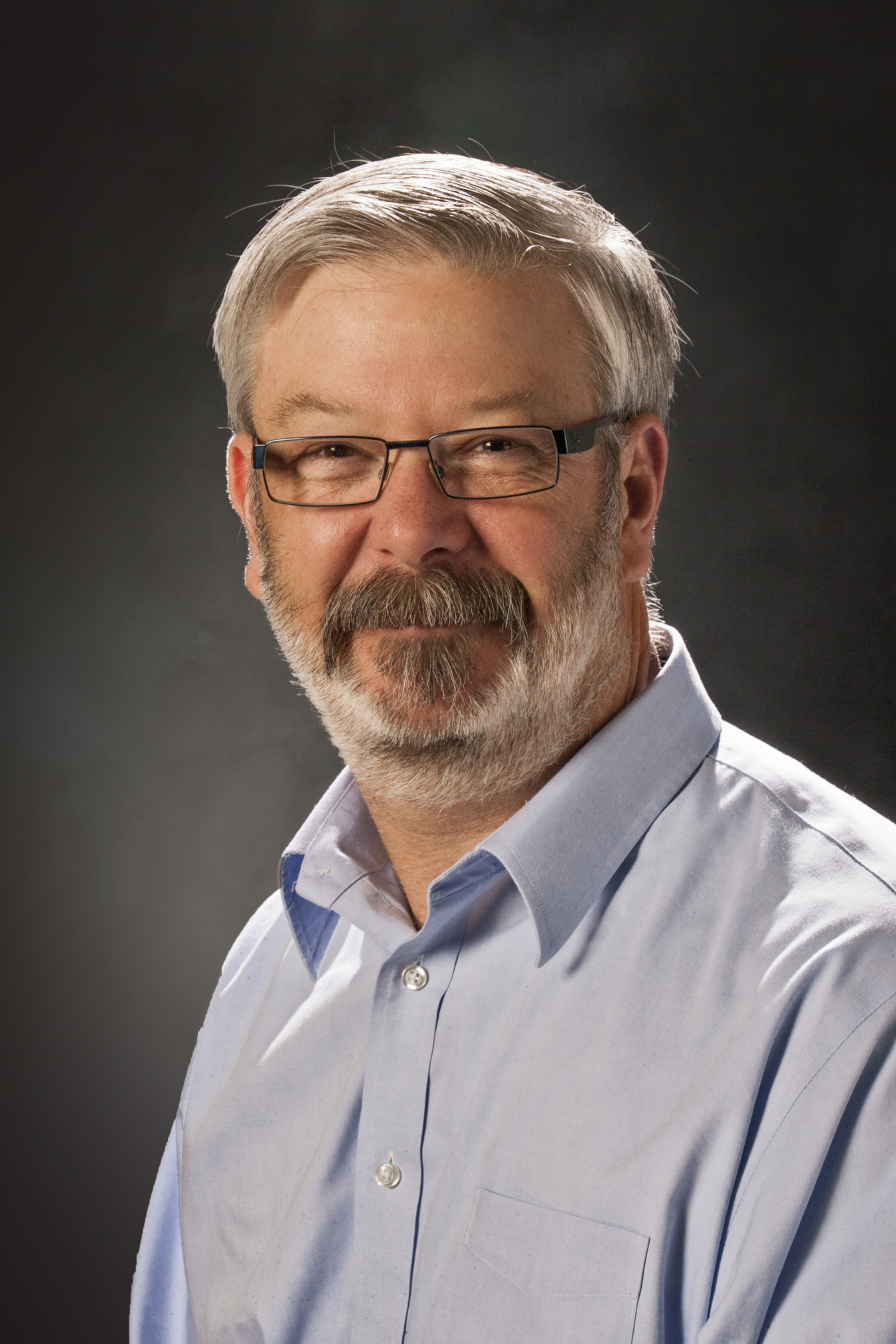
Sandia National Laboratories scientist Todd Lane leads a team focused on algae crop protection strategies. Image courtesy of Sandia National Laboratories
Sandia scientist Todd Lane leads a collaboration between SNL and LLNL that has developed a rapid, cost-effective method to monitor chemical signals—called volatile organic compounds (VOCs)—that algae emit when under stress.
In a recent study in the journal Metabolites, the team describes how they tested whether their monitoring tool could distinguish between different types of algae stresses. Biotic stress occurs because of damage done by an organism while abiotic stress is caused by non-living impacts on a specific environment.
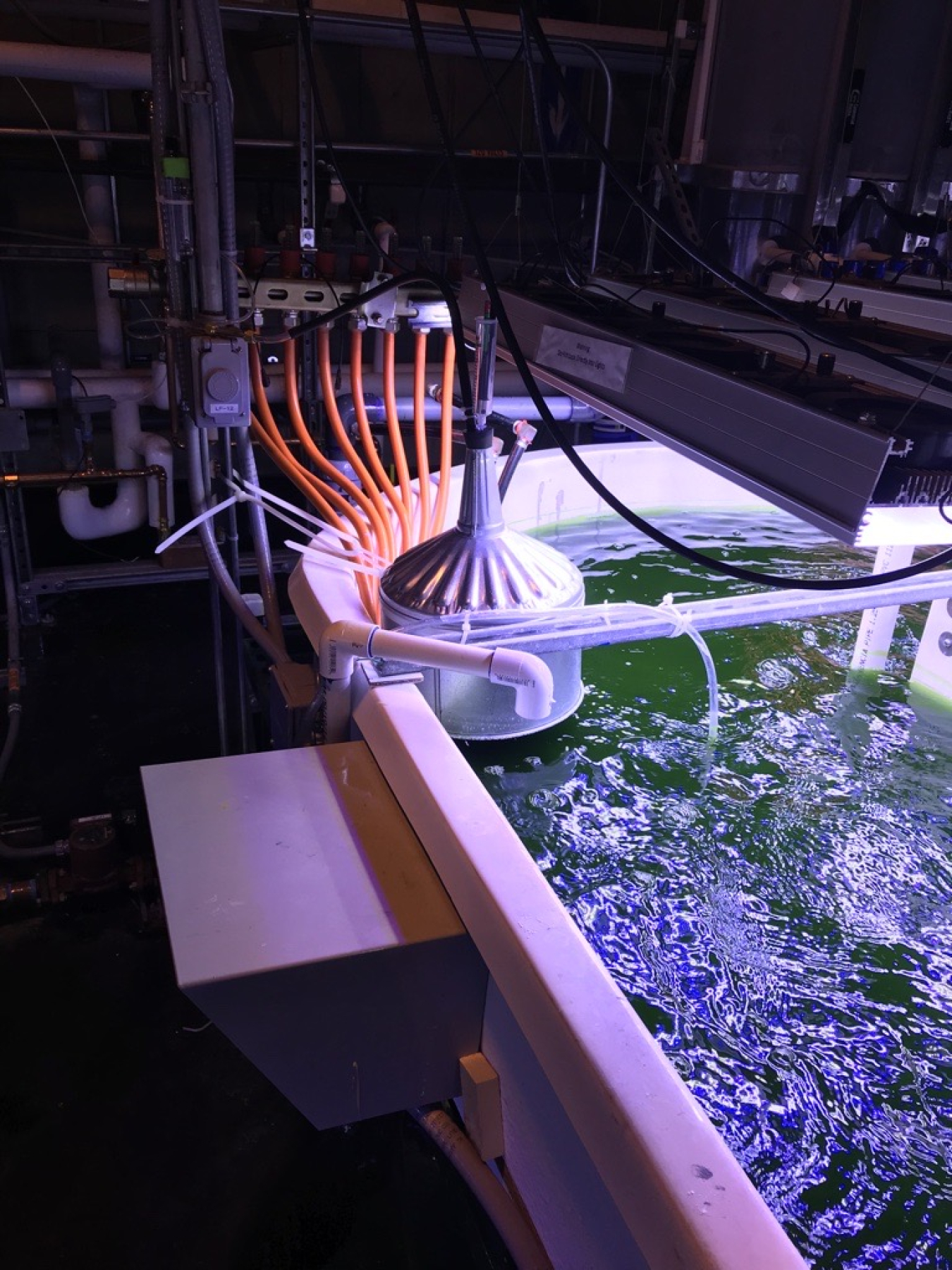
Sampling device developed by Todd Lane and his team for monitoring volatile organic compounds. Image courtesy of Daniel Fishman
More than Mayday: Algae’s Customized Distress Calls
In their study, funded through DOE’s Genomic Science program within the Office of Biological and Environmental Research, the team used the algae strain Microchloropsis gaditana and subjected it to either grazing by a rotifer (a tiny animal predator that eats algae) or a series of freeze/thaw cycles. In this way, they were comparing a biotic versus an abiotic stress.
Their discovery was promising and novel—algae being eaten by grazers put out different chemical signals than the algae that were frozen and thawed. Interestingly, there were also some chemical signals produced during both types of stress, suggesting that algae produce general stress signals alongside signals specific to a particular stressor.
The group identified and reported on the specific VOCs that the algae emitted. These compounds can be used as chemical signatures to detect and diagnose early signs of stress in algal cultures with the goal of delivering targeted and effective treatments prior to a catastrophic culture crash.
Algae Research First Responders
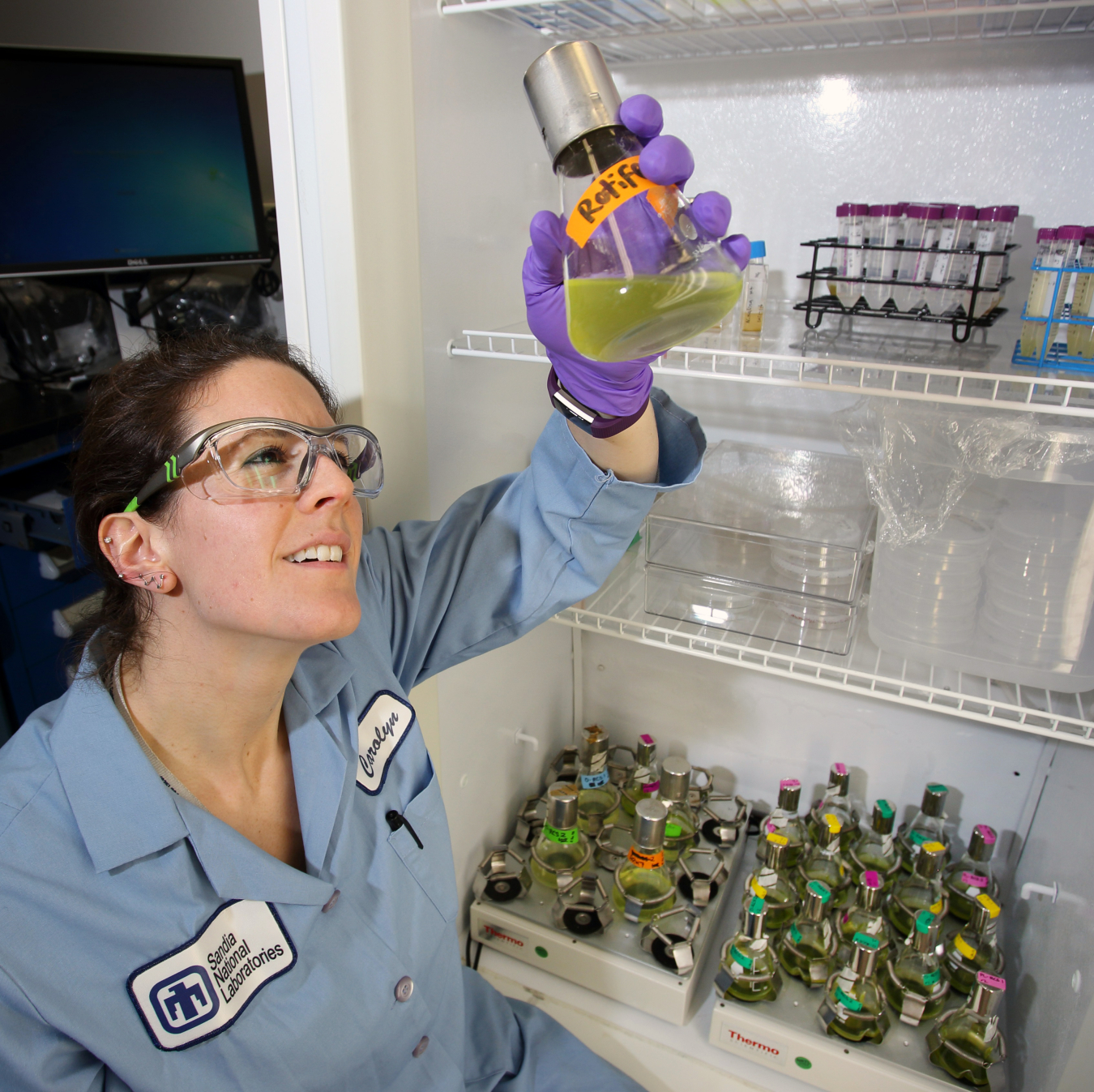
Carolyn Fisher, a postdoc at SNL at the time this work was carried out, is pictured with a culture of rotifers. Image courtesy of Sandia National Laboratories
Carolyn Fisher and Kristen Reese are co-first authors on the paper. Fisher was a postdoc at SNL when the work was carried out and is now a staff member at LLNL. Reese was a graduate student at LLNL when the work was carried out and is now a postdoc at the U.S. Food and Drug Administration.
“The efforts of our work to develop early diagnostic markers of a pond crash, specifically VOC biomarkers from abiotic- and biotic-wounded algae, has great potential to increase the yield of algae-derived compounds, with the target of reducing prices of manufacturing biofuel and bioproduct production precursors,” Reese stated.
Bacteria Bodyguards Bully Potential Algae Grazers
Alongside their work on algae monitoring, Lane and his team are simultaneously working on techniques to help algae crops resist being eaten. Rotifers and fungi are common grazers and parasites that can lead to rapid algal pond crashes. The team identified a bacterial community that can be grown alongside an algal species, Microchloropsis salina, that protects it from grazing by the rotifer Brachionus plicatilis.
In a newly funded project, Lane and his team are extending their work to a series of relevant fungal pathogens. Their goal is to identify bacterial communities that can protect algae from fungal infection. Taken together, Lane and his team are using funding from BETO to advance the field of algae crop protection, which is critical to scale up algae for cost-effective biofuel and bioproduct production.
To learn more about algae crop protection, see BETO’s recently published Barriers to Scale: Algae Crop Protection Workshop Summary Report.
This content was co-authored by Anne Otwell, AAAS Science and Technology Policy Fellow for the U.S. Department of Energy Bioenergy Technologies Office.
Daniel B. Fishman

Daniel B. Fishman is a technology manager with the Bioenergy Technologies Office at the U.S. Department of Energy, where he helps manage the portfolio of applied research projects focused on developing algal biofuels. Daniel received his Master of Science in aquatic science from the University of Michigan’s School of Natural Resources and the Environment and has a background in aquatic ecology, dynamic ecosystem mathematical modeling, and harmful algal blooms. Daniel received a Bachelor of Science in environmental systems from Revelle College at the University of California, San Diego.
Meet our other bloggers ►
Return to Bioprose blog ►


